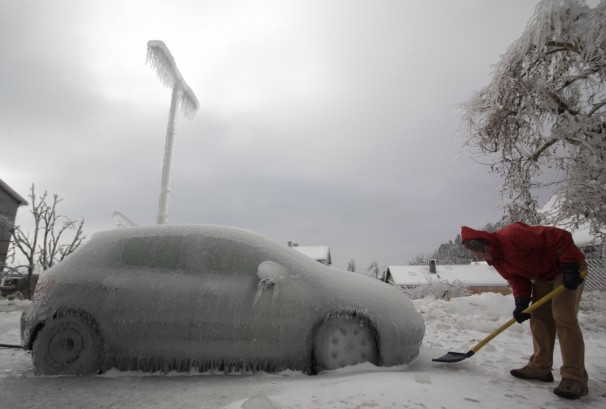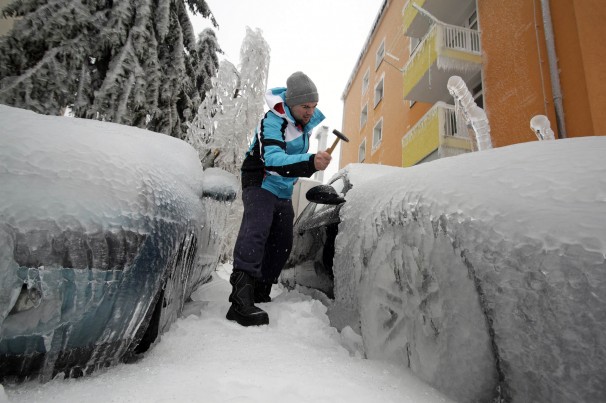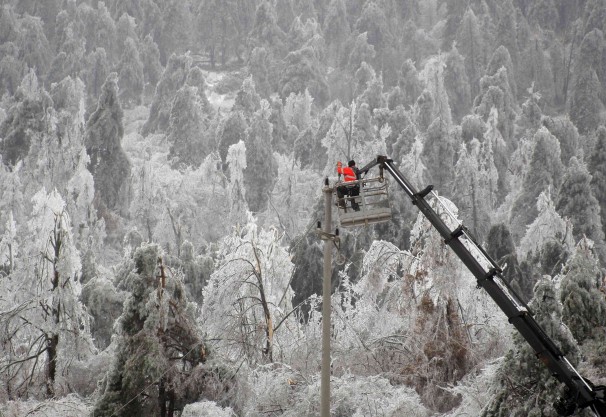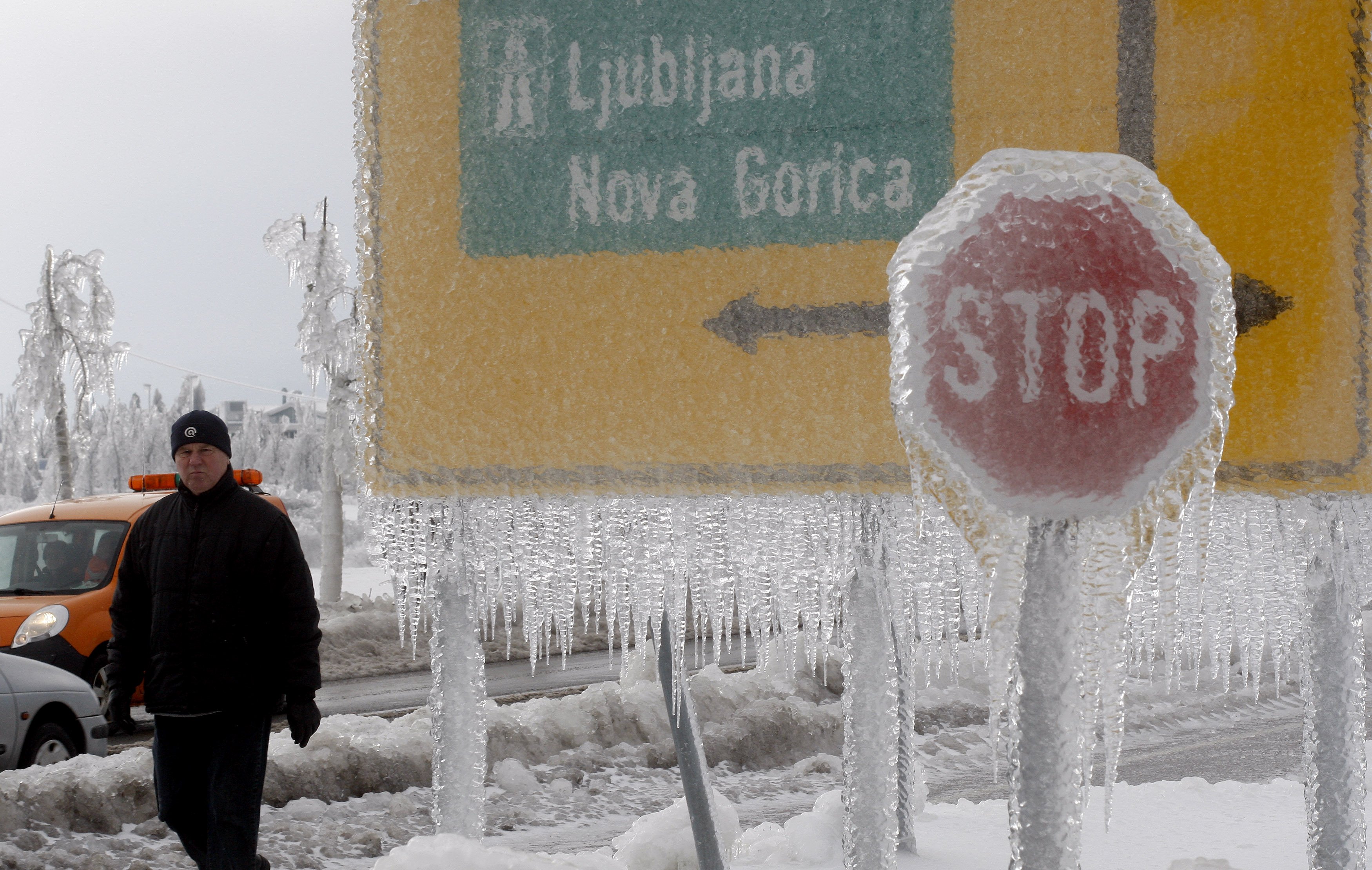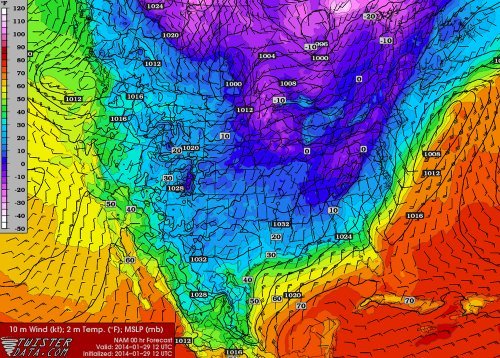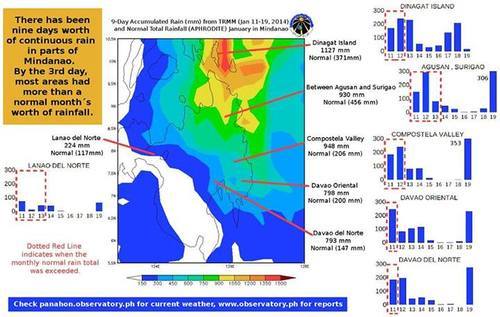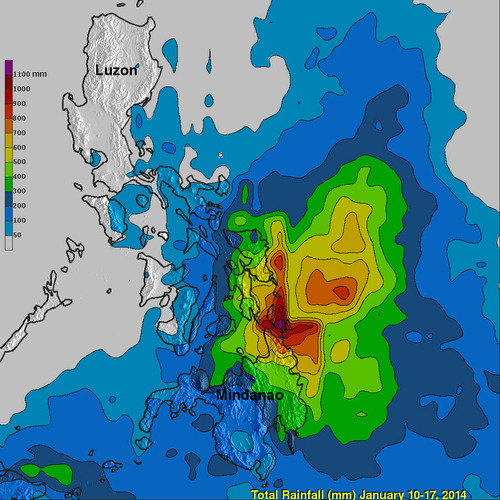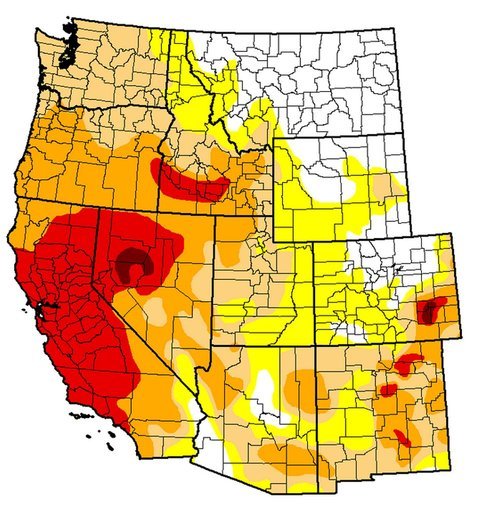Massive Ice Storm Paralyzes Slovenia
A massive ice storm crippled a large part of the Central European country of Slovenia earlier this week. Freezing rain accumulations of 100mm wrecked havoc, encasing all unheated surfaces in a thick layer of ice. The ice brought down power lines, fell trees, and froze vehicles in place, leaving at least 50,000 houses without power at one point. Slovenian authorities estimate that the storm caused at least $89 million in damages and destroyed 40% of Slovenia’s alpine forests. The pictures coming out of Slovenia from this event are extraordinary:
Freezing rain is a common weather phenomena, but for it to occur on this scale is rare. In most situations, freezing rain occurs ahead of a warm front as warm, above-freezing air overrides a shallow layer of below-freezing air near the surface. As snowflakes fall through that warm above-freezing layer they melt into rain drops. This allows it to rain, since those rain drops don’t have a chance to refreeze before hitting the surface. However, once this rain strikes the surface, it freezes instantly, forming a layer of ice. Usually the warm front that causes the freezing rain will be moving, preventing the freezing rain from sitting over one area for a prolonged period of time. However, in some situations the warm front will stall out, or move parallel to an area, causing freezing rain to persist for an extending period of time. In the case of Slovenia’s ice storm, it appears a slow moving weather pattern allowed the freezing rain to sit over the same area for an extended period of time, generating the large ice accumulations seen above.
Sources:
http://www.businessinsider.com/photos-of-ice-storm-in-slovenia-2014-2
